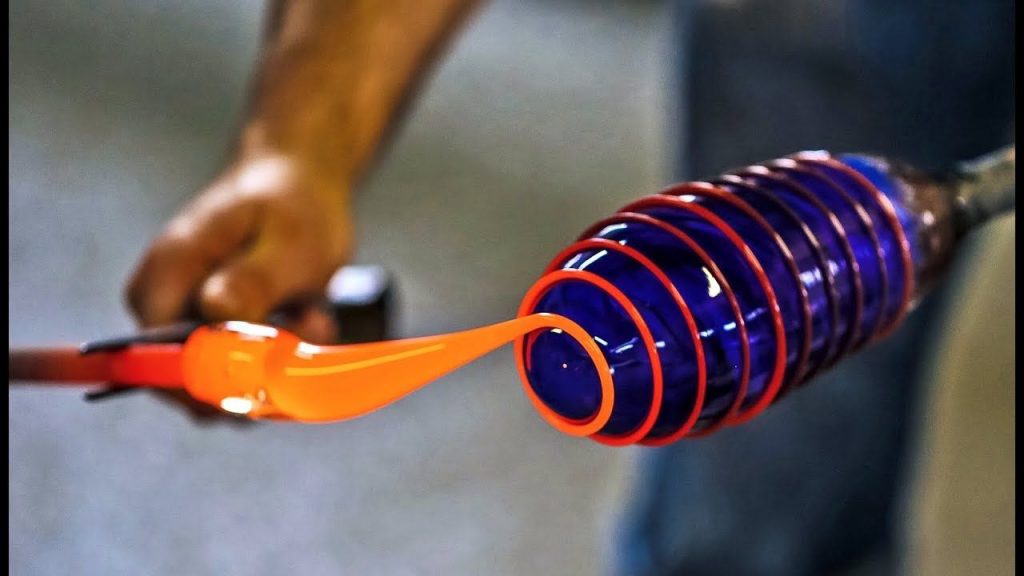
What is Glass? – a question I’ve been asked many times during my lectures.
The heat from the first atomic bomb at Los Alamos, New Mexico, turned much of the surface of the desert around the blast site into glass. Volcanic eruptions where silica is present, can also form a dark natural glass known as OBSIDIAN.
Early glassmaking – The temperature required to melt silica (about 1800 degrees C) is higher than could be obtained in the primitive wood-burning furnaces. Man-made glass only became possible by the discovery that soda ash or potash (obtained from burnt vegetable material) caused the silica to melt at 900-1100 degrees C.
The Mediterranean area favoured soda ash and European countries potash. Natural tints in the glass are removed by the addition of nitre, manganese or arsenic. This was not a precise thing because the additions produced tints of their own, explaining why there was a wide range of colours in early glass. Modern pure additives mean that a consistently clear and colourless glass can be produced.
Molten glass is usually referred to as the METAL.
Additions of COPPER, COBALT, IRON, TIN and other materials produce BLUE, RED, GREEN, AMBER, WHITE OR PURPLE GLASS.
Methods of manufacture – Today, even the lowliest household has items of glass. It has become almost universal in its use and the price range is enormous, from a less than a pound per glass, to many hundreds, or even thousands of pounds, for one glass.
So how is it made? – Early glassmakers used MOULDING techniques. This lasted from about the 15th Century BC – 1St Century BC. Blowing was discovered during the 1st Century BC and by the 1st Century AD virtually every technique of manipulating and decorating glass had been discovered – moulding, free blowing, blowing into a mould, cutting, engraving, enameling, gilding, overlaying with layers of coloured glass, enclosing the decoration between layers of glass, millefiori and glass made to look like natural stone. All these were practiced 2000 years ago and have reappeared at various times down to the present.
Tools – The tools used in glassmaking have remained almost unchanged for many centuries, mainly because they are so simple.
The main tools are as follows:
BLOWPIPE – glass is gathered on the bulbous end and by blowing down the pipe a shape is produced.
CHAIR – the glass-blowers workplace – a bench with flat arms along which the blowpipe can be rolled to shape the vessel. Confusingly, in a glass-works making hand-blown glass, it also refers to a team of three or four men. Thus the size of the factory is reckoned by the number of chairs.
CLAPPERS – made of wood and shaped rather like butter ‘pats’ – used to flatten a blob of molten glass into a foot for a wine glass.
GADGET – a spring clip attached to an iron rod. Replaced the pontil iron in the 18th century and does not produce a pontil mark.
MARVER – a flat iron plate, about 2-3 feet square, with a smooth, highly polished surface. Molten glass has a plastic consistency and can be rolled on the marver during the blowing process to smooth and shape the glass.
PONTIL IRON – a solid metal rod. The end is heated and applied to the base of the vessel being blown, to support it when the blowing pipe is cut away.(when the pontil is removed, it produces a characteristic mark known as the PONTIL MARK on the base)
PUCELLAS – are spring tongs, similar in shape to a large pair of sugar tongs.
